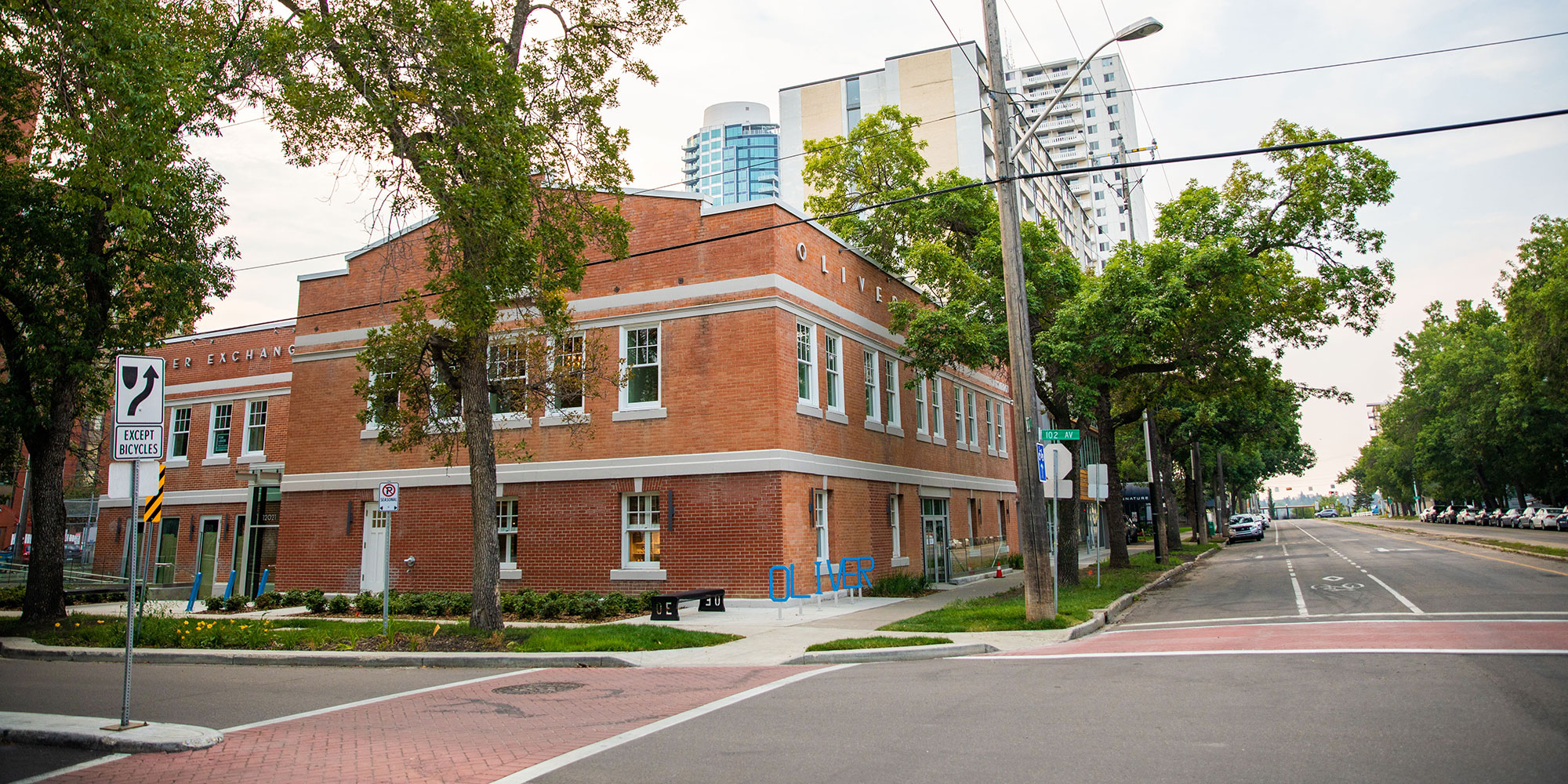Building adds to Edmonton’s small collection of protected heritage architecture
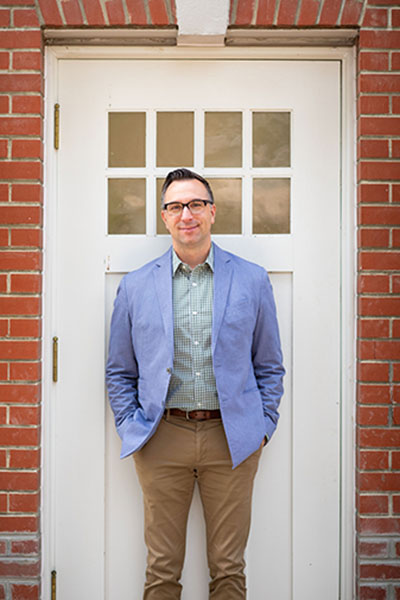 More than a century ago, the building at 121 Street and 102 Avenue, in the Oliver neighbourhood just west of downtown Edmonton, forever changed how community members connected with one another.
More than a century ago, the building at 121 Street and 102 Avenue, in the Oliver neighbourhood just west of downtown Edmonton, forever changed how community members connected with one another.
Built starting in 1913, the two-storey, wood-and-brick structure – designed by Allan Merrick Jeffers, one of the architects responsible for the Alberta Legislature – was one of Edmonton’s first two telephone exchanges. It was unique in Canada for being highly automated. Instead of staffed pull-and-plug switchboards, it featured state-of-the-art equipment that ensured the city's rapidly growing volume of calls would be connected as quickly and efficiently as possible.
Chris Dulaba (Urban and Regional Planning Technology ’99, pictured nearby) believes the building has the potential to keep bringing people together, despite being gutted of its telecom tech long ago. That belief is what led him and business partner Ivan Beljan of Beljan Development to buy the 20,000-square-foot (1,860-square-metre) complex in 2016.
“We thought, ‘Why don’t we try to carry that philosophy into creating something where we can also connect people physically?’” says Dulaba.
No stranger to restoring heritage developments, Dulaba says they felt the telephone exchange offered the opportunity for something “that was different and unique – more specifically something that could give a community-commercial node for Oliver, which we think is somewhat lacking.”
Now known as Oliver Exchange, the result might also qualify as unusual in another important way. It shows how a balance can be struck between historical preservation and making a profit.
That might signal new hope for a diminishing stock of local historical architecture. Edmonton is a city with a with a reputation for erasing its past to address the challenges of growth. Of Alberta’s “worst losses” identified by heritage architecture advocacy group, National Trust for Canada, five out of eight were located in the capital. Could Oliver Exchange be a model that makes heritage preservation practical, profitable and even preferred to building anew?
Restoring vs. razing
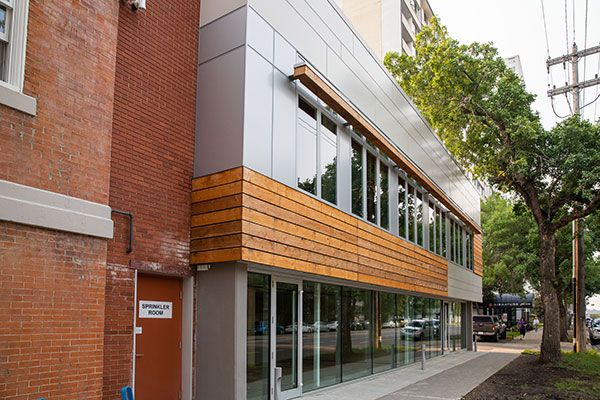 Considering the work that went into it, it’s hard to believe that might be the case.
Considering the work that went into it, it’s hard to believe that might be the case.
“Retrofitting an existing structure to meet code can be more challenging than a new build, there’s no doubt about that,” says Scott Ashe, the principle heritage planner in the city’s urban design unit who worked with Beljan on the project.
That’s just one reason only about 150 heritage buildings are protected as part of the register of municipal historical resources. Approximately 1,000 more are identified as deserving of conservation.
With Oliver Exchange, retrofits were complicated by the fact that the developers chose to officially protect part of the building (which entitled them to municipal funding for restoration). The status prevents it from being demolished and restricts exterior modifications on portions built in 1913 and 1939. A southern addition dating to 1949 wasn’t designated and has been reclad in metal and wood. “It integrates very well with the historic building,” says Ashe.
“There were a whole bunch of inherited conditions,” says Dulaba of the development process. “As property owners, it was our responsibility and obligation to correct those.” For example, the building encroached onto a neighbouring lot owned by Epcor, requiring Beljan to buy land their property had been borrowing for decades.
But such historical “hangovers,” as Dulaba describes them, seem minor compared to the task of rehabilitating the building itself. As evidence of the extent of basic structural modernization, a few thousand pounds of original, cast-iron radiators sit decommissioned and useless in an unoccupied bay. (Dulaba tried to sell them on Kijiji – no takers.)
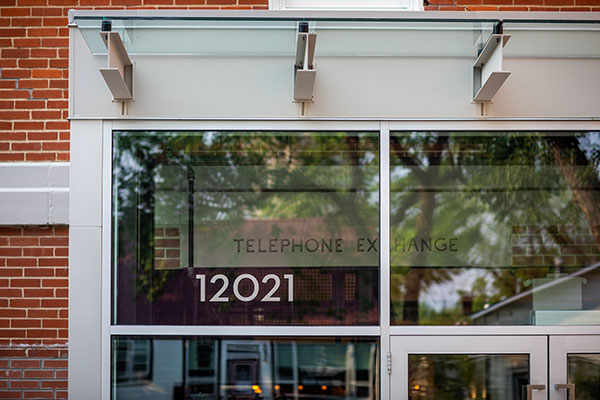 Even more telling of the effort is the central atrium, which welcomes visitors entering through the front door. Intended as event and gathering space, it’s broad and bright due to removal of a massive slab of the second floor and a rebuild of the roof to add skylights. Technically, it’s unmonetized space, but essential to Dulaba and Beljan’s vision of Oliver exchange as a “hub.”
Even more telling of the effort is the central atrium, which welcomes visitors entering through the front door. Intended as event and gathering space, it’s broad and bright due to removal of a massive slab of the second floor and a rebuild of the roof to add skylights. Technically, it’s unmonetized space, but essential to Dulaba and Beljan’s vision of Oliver exchange as a “hub.”
"It’s also [about] balancing what’s right for the community, and enhancing the neighbourhood as a whole.”
“The building has to make money,” he admits. “This isn’t a not-for-profit endeavour. But it’s also [about] balancing what’s right for it and what’s right for the community, and enhancing the neighbourhood as a whole.”
There’s where the cost-benefit analysis favours emotion over accounting. Heritage structures like this, says Ashe, “can immediately connect the public with the city’s past, like a touchstone. It roots you in place.” He sees that historical continuity as contributing to the “livability” of a place.
Dulaba ties that past to identity. “It’s much easier to tear something down and start from scratch,” he says, “but we feel that there’s no story when you do that.”

Place vs. space
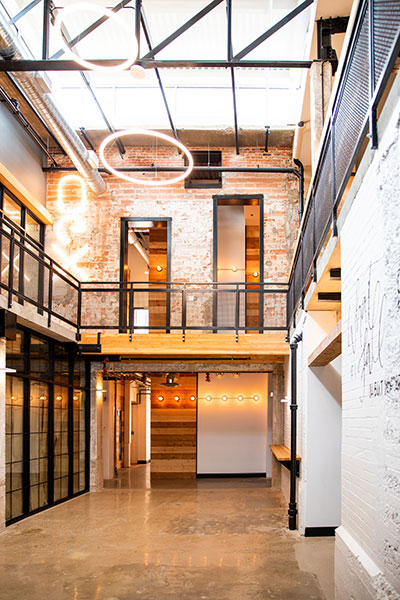 As much as he thinks of himself as a property developer, Dulaba considers him a placemaker, focused on how communities interact with elements of their environment for the better.
As much as he thinks of himself as a property developer, Dulaba considers him a placemaker, focused on how communities interact with elements of their environment for the better.
“I don’t know if there’s enough homage paid to it, in any development,” says Dulaba. “We relate to buildings. Buildings create the character of the city you live in.”
Since he joined Beljan in 2012, Dulaba has been involved in several projects intended to transform physical spaces into evocative places. Mmost have succeeded, such as the Hulbert and Crawford blocks on Whyte Avenue, but some would say there have been missteps.
For example, the company did not save a century-old mansion that was the historical heart of its Sylvancroft Estates development in Edmonton’s upscale west end, as well as being a notable neighbourhood landmark. “She’ll exist now only in memory and romance,” lamented writer Paula Simons following its demolition.
So far, with Plum Home + Design having moved in as the first tenant this summer and many more to come this fall, Oliver Exchange has elicited enthusiasm and support.
"It was a slam dunk basically from the get-go.”
“I think we all had a sigh of relief and thought, ‘Oh, this one is going to be great,’” says Lisa Brown, Oliver Community League president. Compared to past “contentious” developments in the neighbourhood, “we didn’t spend a lot of time on this project,” she adds. “We were just excited to see that corner being activated. It was a slam dunk basically from the get-go.”
For Brown, the building accomplishes two important objectives: it helps preserve the heritage of the area and it provides gathering space that she says is at a premium in Oliver. It gives residents the opportunity to “live, work and play” at places within walking distance of each other.
“It’s still early days,” says Brown. “But I can’t imagine the space won’t be embraced by the community. And hopefully it spurs on some changes in that area in terms of seeing some more adventurous and interesting uses [of existing spaces].”
Just as it might today, the building set a precedent more than 100 years ago, too, points out Dulaba. Given what happened within its walls then, it represented a new way of doing things. That way was soon adopted by others, setting a tone for Edmonton as a leader.
“Why not continue that story?” says Dulaba.
